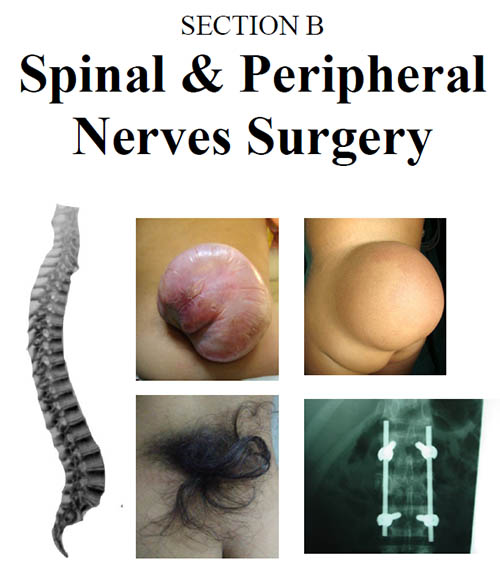Outcome of Endoscopic Discectomy in Patients with Lumbar Prolapsed Intervertebral Disc
DOI:
https://doi.org/10.36552/pjns.v23i3.364Keywords:
Prolapsed intervertebral disc, endoscopic discectomy, visual analogue scaleAbstract
Objective: To determine the outcome of endoscopic discectomyin patients with lumbar prolapsed intervertebral disc in terms of back pain and leg pain using the visual analogue scale.
Material and Methods: Descriptive case series, was conducted at, PINS, LGH Lahore for 6 months. 15 patients were included through non probability consecutive sampling that fulfilled inclusion criteria. All patients’ low back pain and leg pain was documented using visual analogue scale before and after 2 months of surgery.On the basis of VAS we calculated % age improvement of low back pain and leg pain after endoscopic discectomy, while ? 5 scale improvement was considered clinically significant.
Results: Patients mean age was 44.46 years. Among them, 9 (60%) were males and 6(40%) were females. On average, the basal metabolic index (Kg/m2) was 29.29 However, the BMI of females was 31.76 and male was 27.65 Kg/m2. On average, the duration of symptoms was 8.05 months. On average, the Straight Leg Raise was 24.7o at the time of treatment. A decreased sensation was observed in L5 of 3 (20%) and in S1 of 4 (26.67%) participants. Whereas Absent sensation was observed in L5 of 3(20%) and in S1 of 5 (33.33%). Mean preoperative back pain and as well as leg pain was 7.05 that improved to 0.41 and 0.86 4 weeks post operatively.
Conclusion: Endoscopic discectomy is equally effective in alleviating the symptoms without notable difference in surgical outcome.
References
2. Kent PM, Jennifer L The epidemiology of low back pain in primary care.Chiropractic & Osteopathy PMC. 2005; 13: 13.
3. Sangwan SS, Kundu ZS, Raj S, Kamboj P, Siwach RC. Lumbar disc excision through fenestration. IJO. 2006; 40: 86-89.
4. Battie MC and Videman T. Lumbar disc degeneration: epidemiology and genetics. J Bone Joint Surg Am. 2006; 88: 3-9.
5. Amit J and Manish M. Endoscopic lumbar discectomy Experience of first 100 cases. Indian J Orthop. 2010; 44 (2): 184–90.
6. Arvind GK, Anupreet. B, Abhilash. D. Microendoscopic lumbar discectomy:Technique and results of 188 cases. Indian J Orthop. 2014; 48 (1): 81–7.
7. Glaraza M, Gazzeri R, De L R P, Martinez L JF. Microdiscectomy with and without insertion of inter-spinous device for herniated disc at L5-S1 level. J Clinneurosci, 2014; 21 (11): 1934-39.
8. Jönsson B, Strömqvist B. Significance of a persistent positive straight leg raising test after lumbar disc surgery. J Neurosurg. 1999 Jul; 91 (1 Suppl.): 50-53.
9. Katayama Y, Matsuyama Y, Yoshihara H, Sakai Y, Nakamura H, Nakashima S,Ito Z, Ishiguro N Comparison of surgical outcomes between macro discectomy and micro discectomy for lumbar disc herniation: a prospective randomized study with surgery performed by the same spine surgeon. J Spinal Disord Tech. 2006; 19 (5): 344-47.
10. Mohinder K, and Ramesh B. Posterior Endoscopic Disectomy: Results in 300 patients.Indian Journal of Orthopedic, 2012; 46 (1): 81–85.

Downloads
Published
Issue
Section
License
Copyright (c) 2019 FAIQ SHEIKH, FAHEEM AHMAD USMANI, HAMMAD MALIKThe work published by PJNS is licensed under a Creative Commons Attribution-NonCommercial 4.0 International (CC BY-NC 4.0). Copyrights on any open access article published by Pakistan Journal of Neurological Surgery are retained by the author(s).












